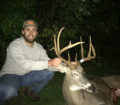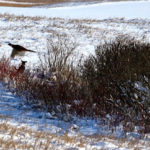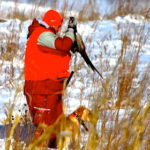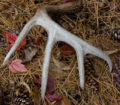By Steve Weisman
The weekend of October 27-28 features one of the most time-honored hunting openers in Iowa: the pheasant opener. Lots of preparation goes into preparing for this opener. Often times, hunters return home to meet with friends and family members. It almost becomes a homecoming of sorts. So, what can hunters look forward to this fall?
In a late August DNR release, Iowa’s pheasant hunters were told that they can expect to find more birds this fall across the Hawkeye state when they head to the fields. Todd Bogenschutz, Iowa DNR upland wildlife research biologist noted, ““The take home message is, if you had good hunting last year, you can expect similar hunting or better hunting across most of the state this year.”
The basis for the upland hunting forecast comes from the annual Iowa August roadside survey, which is a survey tool used by the Iowa Department of Natural Resources (DNR) to physically record the number of upland game seen while driving 218 30-mile routes across the state.
The routes, which are always the same, are conducted from August 1-15 survey routes. It’s a product of 218 30-mile routes across that state that are conducted Aug. 1-15 beginning at sunrise. The state is divided into nine regions: northwest, northcentral, northeast, westcentral, central, eastcentral, southwest, southcentral and southeast. The survey has used the same routes since 1962, which gives a consistent data tool that offers both a year-to-year look, along with historical data covering the past 56 years.
Over the years, we have learned that weather and habitat are the two keys for population increases and decreases. Thus, to get a complete pheasant forecast, the DNR uses historic correlations between roadside counts and winter snowfall, spring temperature and rainfall to predict the fall’s population based on current weather. This model has been used since 2002 and predicts population trends at more than 80 percent accuracy. Headlines from an earlier Iowa DNR news release read, “Iowa’s pheasant population second highest in a decade.” Let’s take a look at what the numbers show and where the best hunting opportunities exist.
First off, this is a statewide look, with the statewide index showing 20.6 birds per route, which is significantly higher than the 14.9 bird per route in 2017. To get this number, biologists take the results from all nine regions to determine that year’s state average. Here are the results from each region:
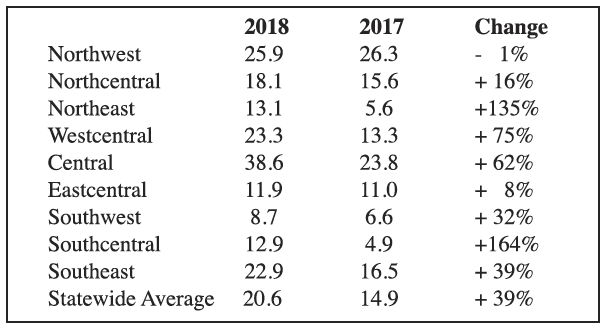
So, statewide the pheasant numbers are up 39 percent. These percentages certainly
benefit from such numbers as the 164% increase in the southcentral and the 135% increase in the northeast. However, it’s easy to get that increase when you go from 4.9 to 12.9 birds per 30-mile route in the southcentral and 5.6 to 13.1 in the northeast.
So, for me it’s about the combination of percentages and numbers per 30-mile route. Since 1996, northwest Iowa (our area) has been the best area for pheasants. Last year was no different. This includes the ups and downs over the years. It is troubling, however, that since 2015, when the numbers were 42.4% per 30-mile route, the northwest region numbers have dropped to 25.9 birds per route in 2018. For this year, much of this reflects the above normal snowfall, late spring and the heavy rains that occurred in June. Still, the hunting success should be similar to what hunters experienced in 2017. Parts of northwest Iowa counties have large tracts of public land, along with some stands of CRP that will hold better than average bird numbers: Clay, Dickinson, Kossuth, Palo Alto, Pocahontas and Osceola counties.
It is the central region that is the shining star for 2018. This region jumped from 23.8 birds per route to 38.6 birds. Counts are 85% above the 10-year average and right at the long-term average. Now, that’s significant. Excellent hunting should take place where good quality habitat occurs. Add the westcentral with an increase to 23.3 birds per route and you have a consistent band of much better pheasant numbers. The central region reported good bird numbers in Boone, Hamilton, Hardin, Story and Webster counties. The westcentral region reported better counts in Audubon, Calhoun, Green and Sac counties.
An estimated 55,000 hunters harvested more than 221,000 roosters in Iowa in 2017. With statewide pheasant numbers up and with good hunting weather, chances are good for an increase in both hunters and birds bagged.
The other upland bird of interest is the bobwhite quail. Southern Iowa was at one time a mecca for quail. However, those numbers plummeted to the point that there was very little quail hunting. Here is what the survey says about quail. The quail index was 1.36 birds per route, which is a significant increase over last year. The statewide quail index is 62% above the 10-year average. Over the last four years, Iowa’s quail index has been the highest seen in the last 20 years, making quail numbers at a modern era high for Iowa’s hunters.
The better quail counts in 2018 came from Adams, Appanoose, Cass, Davis, Jefferson, Lucas, Montgomery, Page, Taylor, Wapello, Wayne and Van Buren counties (Figure 6). Given modern agricultural practices and land use, it’s doubtful Iowa’s quail index can get much higher.
- Rooster pheasant flushed from a snowy thicket.
- Author’s grandson takes a rooster from his yellow Labrador
- Author with his limit in early November.


